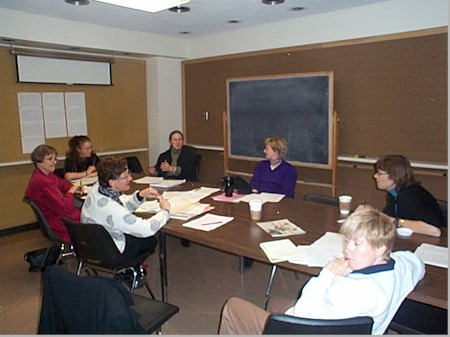
As mentioned last week, here are some of the ‘tells’ that, according to Peter Collett, people exhibit subliminally, and what they usually mean. In The Book of Tells Collett doesn’t just describe body language, but other clues — speech, behaviour etc. — that may give away your intentions, fears or state of mind. He also explores political tells, the tells of British royalty, smokers’ tells (and an explanation of the inherent eroticism of smoking), and even how the meaning of physical expressions differs from country to country. I’m more intrigued by the straight body language tells, the tacit, surreptitious signs that things are not all they seem. It is not surprising that more than half of all tells exhibit either dominant or submissive tendencies. Before humans invented language, these signals were used more overtly to establish the pecking order in prehistoric tribes. This ranking was not merely done as an act of bravado — your placement in the pecking order from alpha to omega male or female was a critical determinant of your role in the tribe, and hence literally provided pre-literate instruction for ‘what you did for a living’ as part of the tribal community. Although Collett doesn’t make the distinction explicitly, he suggests that the dominant and submissive signals each come in three ‘flavours’:
There’s no mistaking the dog’s DC signals and the fawn’s SH signals in the picture above. But can you pick out the three dominant (DC) and three submissive (SD and SH) signals in the picture below? (Apologies for stealing this picture at random off the net, but it was an ideal illustration of Collett’s theories)
Here are some clues:
Here are some other tells, not specifically with dominant or submissive messages, and their usual meaning:
The most important message of the book is that being alert for tells is far more important than researching what they probably mean. In many cases, especially if we know someone well, we become ‘blind’ to their body language, and even with strangers you need merely be observant to pick up on the visual clues presented by people with their posture, hand, body, facial and eye movements — usually the meaning is quite obvious. After all, this is how we communicated as a species before we invented language, so we shouldn’t be surprised that to the careful observer, most tells are dead give-aways. Some other interesting tidbits from the book:
Do I really buy all of this? No, and I’ve excluded some of the signals in the book that I thought were way over the top. Jumping to conclusions based on signals that may just indicate sunburn or asthma or a bad night’s sleep, is foolish, even dangerous. But pop psychology is fun if you don’t take it too seriously. It makes people-watching in restaurants and meetings a hoot. It makes you more observant, about other things beside subliminal signals. What’s hard is explaining to people that you think you’ve ‘caught’ what you’re laughing about. (Top photo above is circulating by e-mail, and I don’t know where it originated. Bottom photo is from the Northeast Illinois U website, identity of the people depicted unknown. ) |
Navigation
Collapsniks
Albert Bates (US)
Andrew Nikiforuk (CA)
Brutus (US)
Carolyn Baker (US)*
Catherine Ingram (US)
Chris Hedges (US)
Dahr Jamail (US)
Dean Spillane-Walker (US)*
Derrick Jensen (US)
Dougald & Paul (IE/SE)*
Erik Michaels (US)
Gail Tverberg (US)
Guy McPherson (US)
Honest Sorcerer
Janaia & Robin (US)*
Jem Bendell (UK)
Mari Werner
Michael Dowd (US)*
Nate Hagens (US)
Paul Heft (US)*
Post Carbon Inst. (US)
Resilience (US)
Richard Heinberg (US)
Robert Jensen (US)
Roy Scranton (US)
Sam Mitchell (US)
Tim Morgan (UK)
Tim Watkins (UK)
Umair Haque (UK)
William Rees (CA)
XrayMike (AU)
Radical Non-Duality
Tony Parsons
Jim Newman
Tim Cliss
Andreas Müller
Kenneth Madden
Emerson Lim
Nancy Neithercut
Rosemarijn Roes
Frank McCaughey
Clare Cherikoff
Ere Parek, Izzy Cloke, Zabi AmaniEssential Reading
Archive by Category
My Bio, Contact Info, Signature Posts
About the Author (2023)
My Circles
E-mail me
--- My Best 200 Posts, 2003-22 by category, from newest to oldest ---
Collapse Watch:
Hope — On the Balance of Probabilities
The Caste War for the Dregs
Recuperation, Accommodation, Resilience
How Do We Teach the Critical Skills
Collapse Not Apocalypse
Effective Activism
'Making Sense of the World' Reading List
Notes From the Rising Dark
What is Exponential Decay
Collapse: Slowly Then Suddenly
Slouching Towards Bethlehem
Making Sense of Who We Are
What Would Net-Zero Emissions Look Like?
Post Collapse with Michael Dowd (video)
Why Economic Collapse Will Precede Climate Collapse
Being Adaptable: A Reminder List
A Culture of Fear
What Will It Take?
A Future Without Us
Dean Walker Interview (video)
The Mushroom at the End of the World
What Would It Take To Live Sustainably?
The New Political Map (Poster)
Beyond Belief
Complexity and Collapse
Requiem for a Species
Civilization Disease
What a Desolated Earth Looks Like
If We Had a Better Story...
Giving Up on Environmentalism
The Hard Part is Finding People Who Care
Going Vegan
The Dark & Gathering Sameness of the World
The End of Philosophy
A Short History of Progress
The Boiling Frog
Our Culture / Ourselves:
A CoVid-19 Recap
What It Means to be Human
A Culture Built on Wrong Models
Understanding Conservatives
Our Unique Capacity for Hatred
Not Meant to Govern Each Other
The Humanist Trap
Credulous
Amazing What People Get Used To
My Reluctant Misanthropy
The Dawn of Everything
Species Shame
Why Misinformation Doesn't Work
The Lab-Leak Hypothesis
The Right to Die
CoVid-19: Go for Zero
Pollard's Laws
On Caste
The Process of Self-Organization
The Tragic Spread of Misinformation
A Better Way to Work
The Needs of the Moment
Ask Yourself This
What to Believe Now?
Rogue Primate
Conversation & Silence
The Language of Our Eyes
True Story
May I Ask a Question?
Cultural Acedia: When We Can No Longer Care
Useless Advice
Several Short Sentences About Learning
Why I Don't Want to Hear Your Story
A Harvest of Myths
The Qualities of a Great Story
The Trouble With Stories
A Model of Identity & Community
Not Ready to Do What's Needed
A Culture of Dependence
So What's Next
Ten Things to Do When You're Feeling Hopeless
No Use to the World Broken
Living in Another World
Does Language Restrict What We Can Think?
The Value of Conversation Manifesto Nobody Knows Anything
If I Only Had 37 Days
The Only Life We Know
A Long Way Down
No Noble Savages
Figments of Reality
Too Far Ahead
Learning From Nature
The Rogue Animal
How the World Really Works:
Making Sense of Scents
An Age of Wonder
The Truth About Ukraine
Navigating Complexity
The Supply Chain Problem
The Promise of Dialogue
Too Dumb to Take Care of Ourselves
Extinction Capitalism
Homeless
Republicans Slide Into Fascism
All the Things I Was Wrong About
Several Short Sentences About Sharks
How Change Happens
What's the Best Possible Outcome?
The Perpetual Growth Machine
We Make Zero
How Long We've Been Around (graphic)
If You Wanted to Sabotage the Elections
Collective Intelligence & Complexity
Ten Things I Wish I'd Learned Earlier
The Problem With Systems
Against Hope (Video)
The Admission of Necessary Ignorance
Several Short Sentences About Jellyfish
Loren Eiseley, in Verse
A Synopsis of 'Finding the Sweet Spot'
Learning from Indigenous Cultures
The Gift Economy
The Job of the Media
The Wal-Mart Dilemma
The Illusion of the Separate Self, and Free Will:
No Free Will, No Freedom
The Other Side of 'No Me'
This Body Takes Me For a Walk
The Only One Who Really Knew Me
No Free Will — Fightin' Words
The Paradox of the Self
A Radical Non-Duality FAQ
What We Think We Know
Bark Bark Bark Bark Bark Bark Bark
Healing From Ourselves
The Entanglement Hypothesis
Nothing Needs to Happen
Nothing to Say About This
What I Wanted to Believe
A Continuous Reassemblage of Meaning
No Choice But to Misbehave
What's Apparently Happening
A Different Kind of Animal
Happy Now?
This Creature
Did Early Humans Have Selves?
Nothing On Offer Here
Even Simpler and More Hopeless Than That
Glimpses
How Our Bodies Sense the World
Fragments
What Happens in Vagus
We Have No Choice
Never Comfortable in the Skin of Self
Letting Go of the Story of Me
All There Is, Is This
A Theory of No Mind
Creative Works:
Mindful Wanderings (Reflections) (Archive)
A Prayer to No One
Frogs' Hollow (Short Story)
We Do What We Do (Poem)
Negative Assertions (Poem)
Reminder (Short Story)
A Canadian Sorry (Satire)
Under No Illusions (Short Story)
The Ever-Stranger (Poem)
The Fortune Teller (Short Story)
Non-Duality Dude (Play)
Your Self: An Owner's Manual (Satire)
All the Things I Thought I Knew (Short Story)
On the Shoulders of Giants (Short Story)
Improv (Poem)
Calling the Cage Freedom (Short Story)
Rune (Poem)
Only This (Poem)
The Other Extinction (Short Story)
Invisible (Poem)
Disruption (Short Story)
A Thought-Less Experiment (Poem)
Speaking Grosbeak (Short Story)
The Only Way There (Short Story)
The Wild Man (Short Story)
Flywheel (Short Story)
The Opposite of Presence (Satire)
How to Make Love Last (Poem)
The Horses' Bodies (Poem)
Enough (Lament)
Distracted (Short Story)
Worse, Still (Poem)
Conjurer (Satire)
A Conversation (Short Story)
Farewell to Albion (Poem)
My Other Sites






I recently read a book titled Mind Wide Open by Steven Johnson in which he discusses how our brain works in relative, but easy to read, detail. At one point he discusses how we, mostly subconsciously, determine a person’s mood just by looking at somones eyes in static pictures. Interestingly enough, when you look at a static image of someones eyes your first reaction (the subconscious one) is almost guaranteed to be more accutate than the one you get when you study the image and consciously analyze the persons eyes.I suspect that posture/handsignals/speech/etc. signaling dominant/submissive nature is very much the same in that you are much better going with your gut instinct than analyzing what is going on and trying to draw a rational/reasoned conclusion. Your subconscious mind has taken millions of years of evolution to develop and is far more complex and substantially faster at analysis than our conscious mind with a table outlining dominant and submissive signals. That said, it is pretty interesting studying all the subtle signals we give each other.
Aha, another advocate of ‘Trust Your Instincts’! As I mentioned, the real value of the book is making you more observant. Once you start, it’s hard to turn it off again.
The author of this book was featured in a series of programmes on Channel 4 here in the UK, I think. Although I didn’t watch them, so I can’t say for sure.If you’re into this, you might enjoy Derren Brown (www.derrenbrown.co.uk) – I’m a big fan of his. He’s a former magician turned “psychological illusionist”. It’s very hard to describe what he does though. If you’ve heard of him it’s probably from his Russian Roulette stunt, but there’s much, much more to him than that, and his DVD is really worth checking out if it’s available where you are. There’s some clips of what he does here:http://www.channel4.com/entertainment/tv/microsites/M/mindcontrol/(Re-reading that it sounds incredibly spammy, but I am honestly just a fan!)